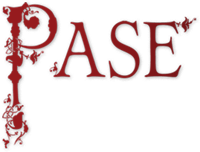Esbern 15
Esbern ‘of Covenham St Mary’ (Lincs.), fl. 1066
Male
CPL
4 of 5
Summary
Esbern 15 was a small landowners in north-east Lincolnshire whose single manor was assessed at under 3½ carucates and worth £3.Distribution map of property and lordships associated with this name in DB
List of property and lordships associated with this name in DB
Holder 1066
| Shire | Phil. ref. | Vill | DB Spelling | Holder 1066 | Lord 1066 | Tenant-in-Chief 1086 | 1086 Subtenant | Fiscal Value | 1066 Value | 1086 Value | Conf. | Show on Map |
|---|---|---|---|---|---|---|---|---|---|---|---|---|
| Lincolnshire | 3,16 | Covenham St Mary | Esbern | Esbern 'of Covenham St Mary' | - | William de Saint-Calais, bishop of Durham | unnamed monks of Saint-Calais | 2.50 | 3.00 | 4.00 | E | Map |
| Lincolnshire | 3,17 | Skidbrooke | - | Esbern 'of Covenham St Mary' | - | William de Saint-Calais, bishop of Durham | unnamed monks of Saint-Calais | 0.88 | 0.00 | 0.00 | E | Map |
| Totals | ||||||||||||
Lord 1066
| Shire | Phil. ref. | Vill | DB Spelling | Holder 1066 | Lord 1066 | Tenant-in-Chief 1086 | 1086 Subtenant | Fiscal Value | 1066 Value | 1086 Value | Conf. | Show on Map |
|---|---|---|---|---|---|---|---|---|---|---|---|---|
| Lincolnshire | 3,18 | Grainthorpe | Esbern | - | Esbern | William de Saint-Calais, bishop of Durham | - | 0.56 | 0.00 | 0.00 | E | Map |
| Lincolnshire | 3,19 | Little Grimsby | Esbern | - | Esbern | William de Saint-Calais, bishop of Durham | - | 0.25 | 0.00 | 0.00 | E | Map |
| Totals | ||||||||||||
Profile
Esbern 15 had a single manor with a berewick and two parcels of sokeland located within a radius of 4 miles. One of the pieces of sokeland was at Little Grimsby, where Esbern 12 also had sokeland, and it is possible that they were the same man. Esbern 11 and Esbern 13 held in the same part of Lincolnshire and conceivably were also identical.General remarks applicable to Esbern 11–18. Estates ascribed to Esbern are especially thick on the ground in north Lincolnshire and present great difficulties in identification. Seventeen small or very small holdings were involved, with an average assessment of less than 1 carucate, and at their extremities situated 50 miles apart. It is inconceivable that they belonged to one man. It is also clear from the identifications of Esberns 7–10 that the name was common enough in the Danelaw for a multiplicity of Lincolnshire Esberns to be plausible.
These Lincolnshire estates were held by eight different successors in 1086. All eight had very scattered fiefs in Lincolnshire, none of which was constructed on a geographical basis, thus ruling out the possibility that the properties of a super-Esbern had been divided up for that reason.
We have judged it most likely that each of the tenants-in-chief succeeded to one distinct Esbern, but it is possible that there were fewer, especially in the 15-mile stretch of country between the Wolds and the mouth of the Humber, where the estates concerned clustered and overlapped most densely.
